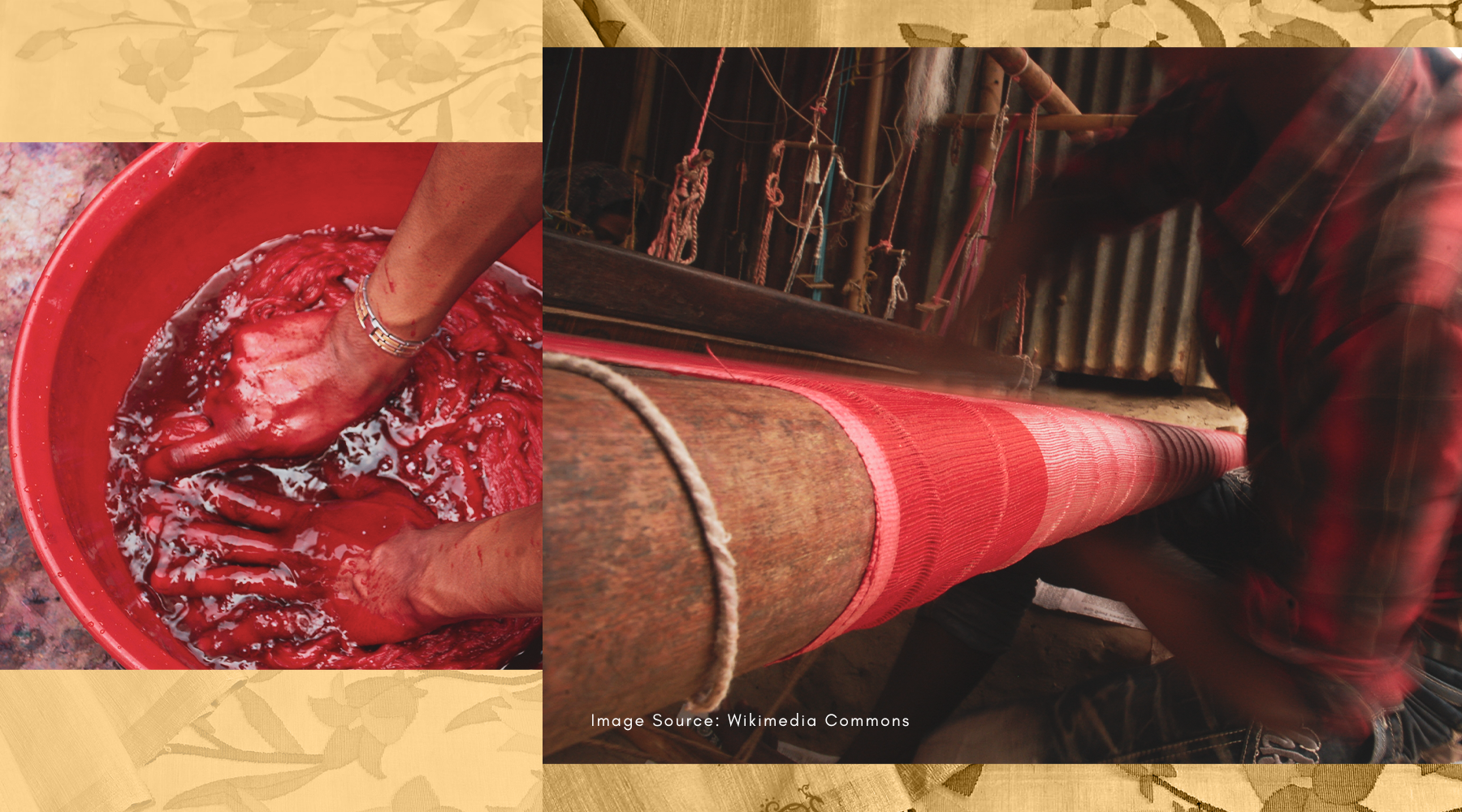ROOTS OF JAMDANI WEAVING
Around the 12th century, numerous patterns and colors were blended into the fabric by Islamic influences. And with the magic of one inlaid thread, which was introduced sporadically to the loom, it transformed into a surface for mesmerizing patterns. The process produced motif-rich fabrics, and it was under the rule of the Mughal emperor Akbar that the craft reached its peak, the jamdani. The Dhakai weavers have been producing this fabric for generations, but they actually received royal patronage during the 16th and 17th centuries. And the best muslin fabric variations with magnificent floral and figurative themes were created.

Jahangir, the emperor of the Mughal Empire, used to wear a jamdani sash with floral weaving. Only the finest gossamer cotton filaments were chosen for the fabrication of the Jamdani, which was crafted of Dhaka muslin of such exceptional quality that it was claimed to have been spun from the air. Only moist air could be used to work such delicate fibers. After Bengal was divided in 1947, many Hindu weavers from Bangladesh migrated to India and settled in West Bengal. With this, Jamdani weaving was introduced to modern India.
WEAVING TECHNIQUE USED IN JAMDANI
The jamdani weave is a type of supplemental weft weaving in which, in addition to the regular weft used to hold the warp threads together, a non-structural weft is used to create decorative patterns.
The primary weft produces a fine, sheer fabric, while the supplementary weft, which uses heavier threads, embellishes it with meticulous designs. Each motif pattern is manually woven into the muslin using one continuous extra weft of yarn. In the end, the Jamdani fabric is covered in a dense cacophony of various designs that give a floating impression. Graph paper is used to draw the pattern, which is placed beneath the warp instead of sketched or outlined on the fabric. Gold and cotton thread were frequently combined to make the patterns.

The weaving of Jamdani textiles takes time and requires skillful hands.
The draw loom is a sophisticated hand loom used to weave figured fabrics. The cross cords lift the warp to execute the pattern in Varanasi's design harness, which is very wide and complicated. The naqsha is a design element made up of all these elaborate cord arrangements. Extremely talented naqshabands, a rapidly decreasing group of artisans, designed the naqsha.
Author - Shalika






